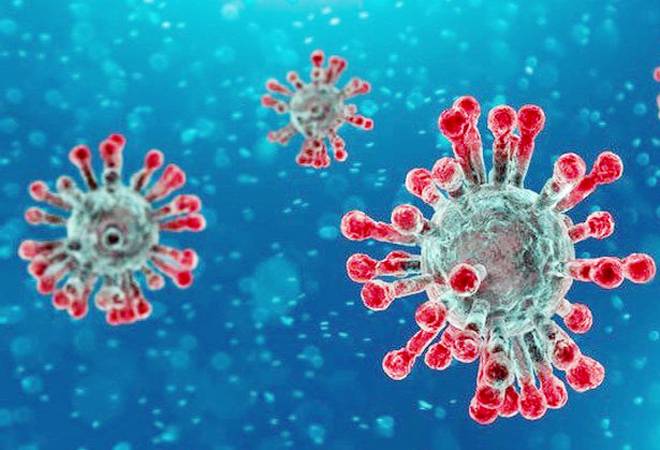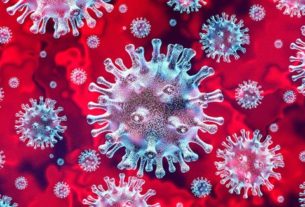From Our Bureau
9TH JULY 2020
India witnessed a surge with 24,879 fresh COVID-19 positive cases reported on Thursday, taking the country’s cumulative tally to 7,67,296. The death toll climbed to 21,129, with 487 fatalities in the last 24 hours.
In a significant achievement, the number of recovered cases has overshot the number of COVID-19 active cases by 2,06,589. The number of recovered cases is 1.75 times (almost twice) the number of active cases.
During the last 24 hours, 19,547 patients have been cured, taking the cumulative figure of recoveries among COVID-19 patients to 4,76,378 as of today. This is a result of focussed attention on effective surveillance through house-to-house contact tracing, early detection, and isolation as well as timely and effective clinical management of COVID-19 cases.
India’s COVID-19 recovery rate is also steadily increasing. The recovery rate among COVID-19 patients has increased to 62.09 percent today.
Presently, there are 2,69,789 active cases under medical supervision.
It would perhaps be not fair to compare India to other countries in terms of absolute numbers. But, India has 195.5 cases per million population, which is amongst the lowest in the world.
The proactive delineation of containment and buffer zones, aggressive testing, early and timely detection and adherence to clinical protocols & better ICU/hospital management also manifests in India having one of the lowest fatalities in the world.
Deaths per million population in India are 15.31 which translates to a fatality rate of 2.75 percent. Whereas, the global deaths per million population stand at 68.7.
India is also seeing steady increase in growth of daily testing numbers. During the last 24 hours, 2,67,061 samples have been tested. As on date, 1,07,40,832 samples have been tested for identification of COVID-19 in the population.
Concerted efforts by MoHFW and ICMR have resulted in an impressive augmentation of the testing labs network in the country, which boasts of 1,132 labs comprising 805 labs in the government sector and 327 private labs. These include Real-Time RT PCR based testing labs: 603 (Govt: 373 + Private: 230), TrueNat based testing labs: 435 (Govt: 400 + Private: 35) and CBNAAT based testing labs: 94 (Govt: 33 + Private: 61).
India has the lowest cases and deaths/million population: Dr. Harsh Vardhan
The 18th meeting of the
high-level Group of Ministers (GoM) on COVID-19 was held under the chairmanship
of Dr. Harsh Vardhan, Union Minister of Health & Family Welfare by a
video-conference today. He was joined by Dr. S. Jaishankar, Union Foreign
Minister, Hardeep S. Puri, Union Minister of Civil Aviation, Ashwini Kumar
Choubey, Minister of State, Health & Family Welfare, and Mansukh Mandaviya,
Minister of State, Chemical and Fertilizers & Shipping. Dr. Vinod Paul,
Member (Health), Niti Aayog joined the meeting through video conference link.
At the outset, the GoM was briefed on the current status of COVID-19 in India. The global comparison between the five most affected countries clearly depicted that India has one of the lowest cases per million (538) and deaths per million (15) compared to the global average of 1,453 and 68.7, respectively.
Within the country, eight states (Maharashtra, Tamil Nadu, Delhi, Karnataka, Telangana, Andhra Pradesh, Uttar Pradesh and Gujarat) contribute to around 90 percent of the active caseload and 49 districts account for 80 percent of active caseload, as of today.
Moreover, six states (Maharashtra, Delhi, Gujarat, Tamil Nadu, Uttar Pradesh and West Bengal) account for 86 percent of total deaths, and 32 districts account for 80 percent deaths. The GoM was briefed that special efforts were made in the regions showing higher Case Fatality Rate.
Regarding the COVID-19 healthcare infrastructure in the country, the GoM was briefed that as on today, there are a total of 3,914 facilities in the country with 3,77,737 Isolation beds (without ICU support), 39,820 ICU beds and 1,42,415 Oxygen supported beds along with 20,047 ventilators. In terms of healthcare logistics, cumulatively 213.55 lakh N95 masks, 120.94 lakh PPEs and 612.57 lakh HCQ tablets have been distributed.
During the period of Unlock 2.0, the future steps include sharp focus on containment and surveillance including demarcation of Containment Zones according to the guidelines of Ministry of Health & Family Welfare; Containment Zones to be notified on the websites; strict perimeter control & with only essential activities to be allowed; intensive contact tracing, house-to-house search/surveillance; and Buffer Zones to be identified outside the Containment Zones to contain potential new cases.
It was mentioned that the Central Government and State/UT coordinated measures taken at regular intervals include regular visit by Central Teams of public health experts to the most affected states for handholding and supporting States for more effective containment & control measures. The regular Video conferences chaired by Cabinet Secretary with all States/UTs focus on containment of the spread, ramping up the testing and reducing the mortality.
Dr Harsh Vardhan stated that “as we move forward, our focus shall be on the management of COVID-19 through strict containment measures and surveillance; utilizing full testing capacity; focus on monitoring of co-morbid and elderly population; predicting emerging hotspots leveraging digital tools such as Aarogya Setu; ensuring seamless patient admission processes; focus on infrastructure preparedness (critical care beds, oxygen, ventilators and logistics. Along with States/UTs, our aim is to reduce and keep the Case Fatality Rate low by early identification and effective clinical management.”
Dr. Sujeet K Singh, Director, National Centre for Disease Control, presented a
detailed report on surveillance efforts undertaken in India during the
pandemic. The focus was on strict containment strategy and surveillance through
SARI/ILI cases, serological survey and increase in lab network to widen
countrywide testing. The major concern areas in the country were highlighted
and the measures to be taken were listed including timely clinical management
along with testing and surveillance in the high risk population with
co-morbidities to reduce the Case Fatality Ratio. (eom)

